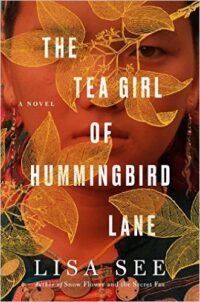Book review: The Tea Girl of Hummingbird Lane by Lisa See
 It can be disconcerting to realise which historical events were contemporaneous. The Aztec empire was at its height in 1519, the same year in which Leonardo da Vinci died and Catherine Howard (fifth wife of Henry VIII) was born. Japan ended its Sakoku period of isolation in 1868, the same year as the first bicycle race was held in Paris and the first traffic lights were installed in London.
It can be disconcerting to realise which historical events were contemporaneous. The Aztec empire was at its height in 1519, the same year in which Leonardo da Vinci died and Catherine Howard (fifth wife of Henry VIII) was born. Japan ended its Sakoku period of isolation in 1868, the same year as the first bicycle race was held in Paris and the first traffic lights were installed in London.
I tend to think of the Cultural Revolution in China as something that happened ages ago, even though it ended just a few years before I was born. The novel The Tea Girl of Hummingbird Lane by Lisa See brought it into perspective for me as its main character is almost exactly my age, yet her life is intrinsically linked to the end of the Cultural Revolution and the period of reform that followed.
Li-yan has been raised on Nannuo Mountain in Yunnan, farming tea with her family and living the same way their village has for hundreds of years. As Akha, an ethnic minority, they have largely been left alone by the Chinese state. But the Cultural Revolution still left its mark in the form of Teacher Zhang, banished to Yunnan from the capital, forced to teach the Akha children their ethnicity doesn’t exist in a language the older members of their families don’t speak.
“ ‘Soon I’ll switch all my teaching to Mandarin…To learn a different language is to learn a different way of living,’ he recites. ‘This, I’m told, will be your way to learn how to cultivate your fields scientifically and appreciate proper sanitation. It will also help with your political indoctrination, which will promote loyalty to the state.’ Sometimes I don’t know if Teacher Zhang is teasing or torturing us with his comments.”
Though they don’t have a lot, Li-yan is in a privileged position. As the only daughter of the village midwife, the most respected woman in Spring Well Village, Li-yan is expected to take over this coveted position, which will give her a good living. As the novel begins so does Li-yan’s training – and she’s in for a shock.
Just as Li-yan is coming of age, outside opportunities beckon and she is faced with huge decisions. But she doesn’t always make smart choices and will have to face some really tough situations as a consequence.
Tea is the main thread through Li-yan’s life, in particular a form of raw tea called Pu’er. The popularity and value of Pu’er rises and falls in a pattern that echoes and influences Li-yan’s own changes in fortune.
I really enjoyed this novel. It’s about a place and events I knew little of beforehand. Though packed with detail, it also has great characters and a story that balances action and emotion. I liked it a lot more than See’s first novel Snow Flower and the Secret Fan. She’s written nine more novels besides these two so perhaps I will check some more out.
Published 2017 by Scribner.
Source: borrowed from a friend.